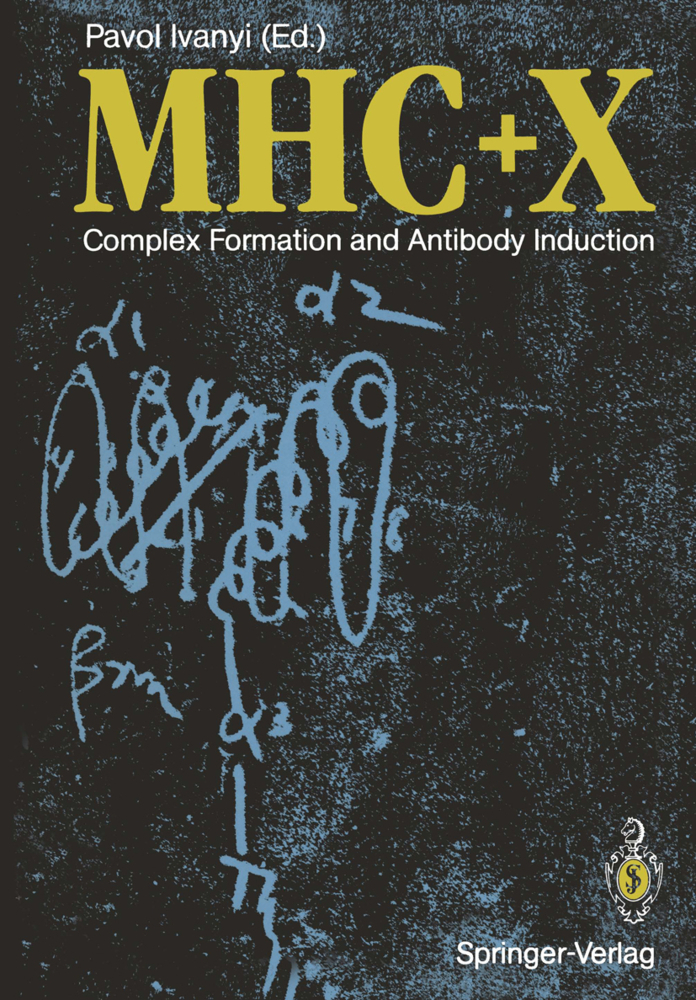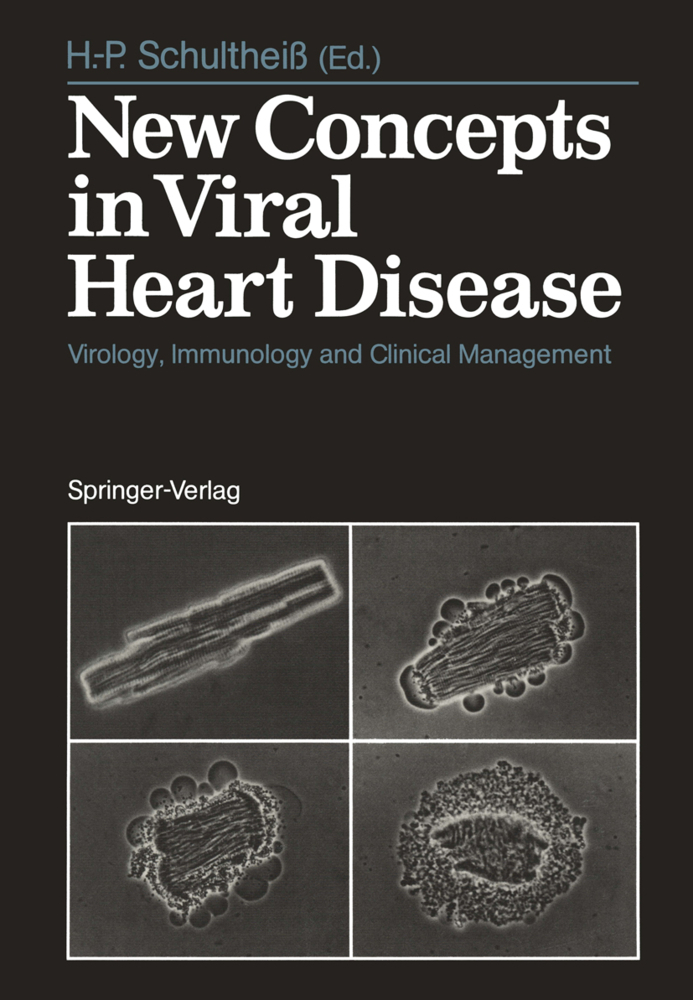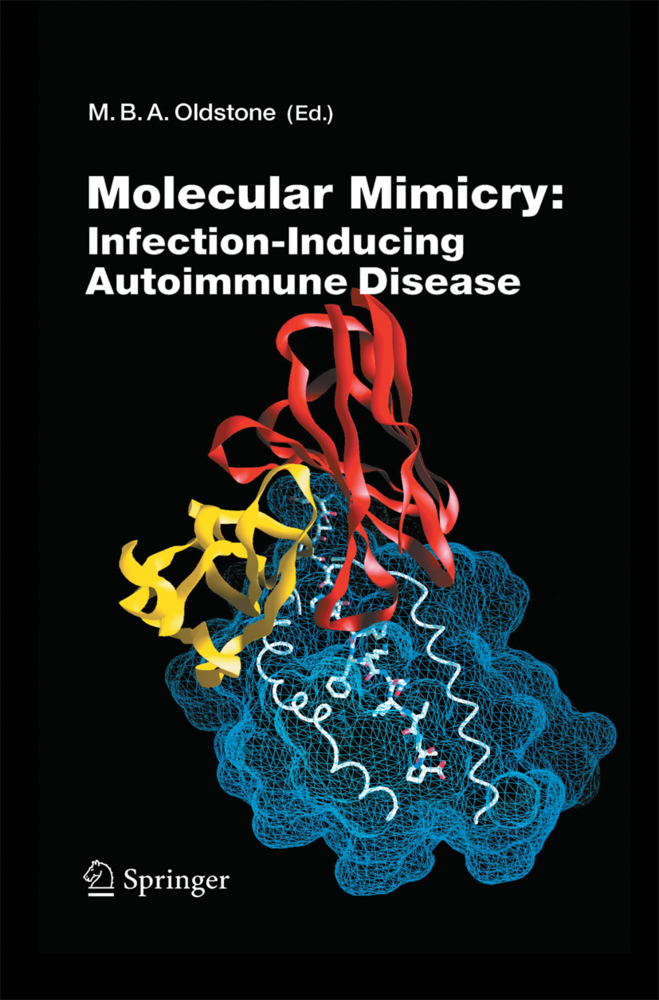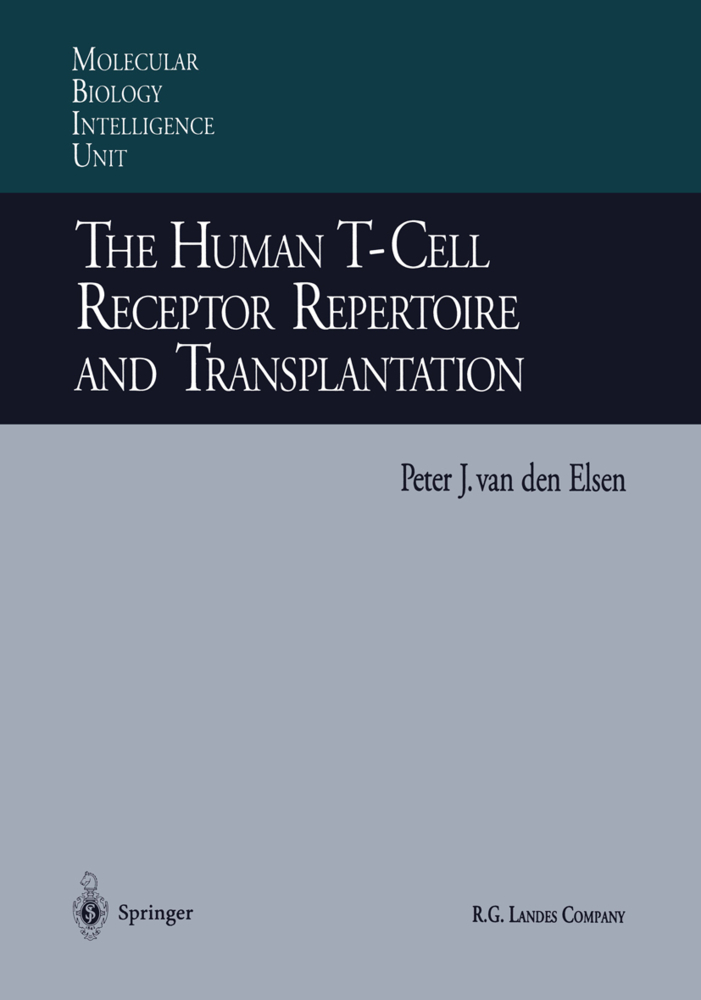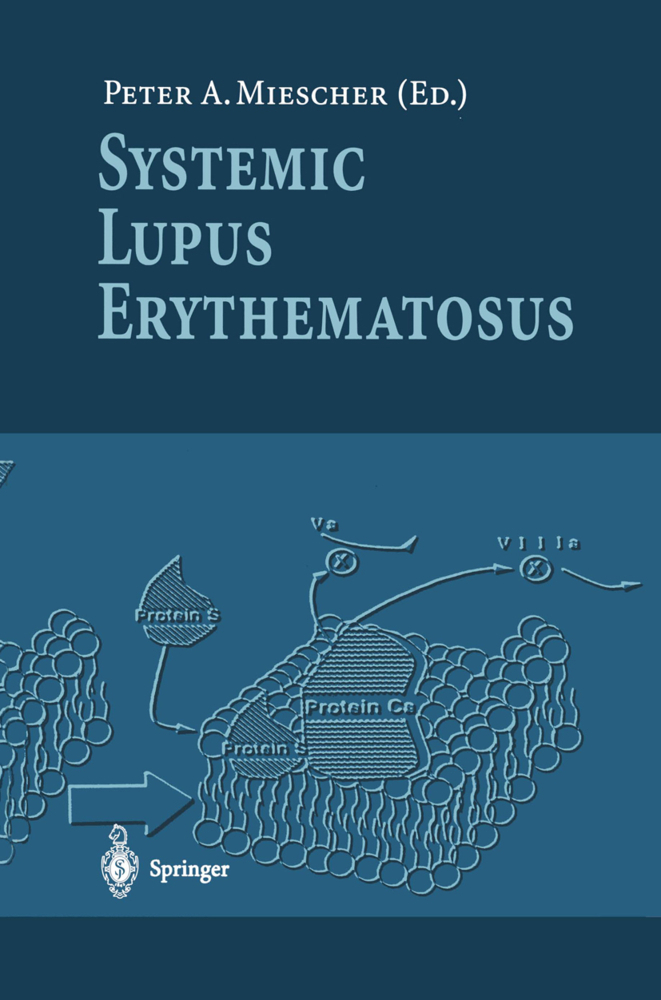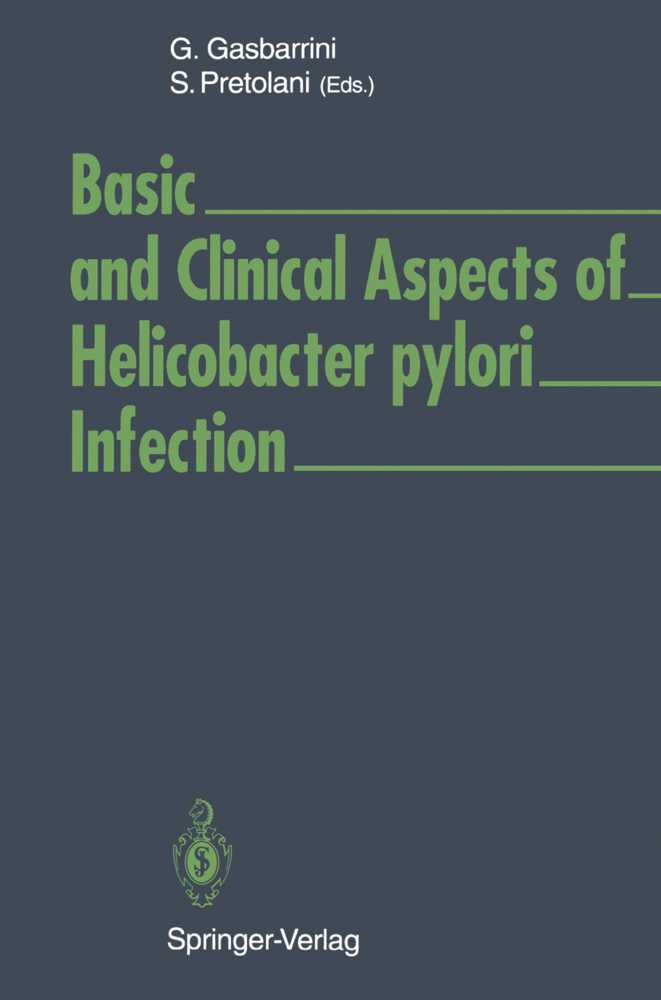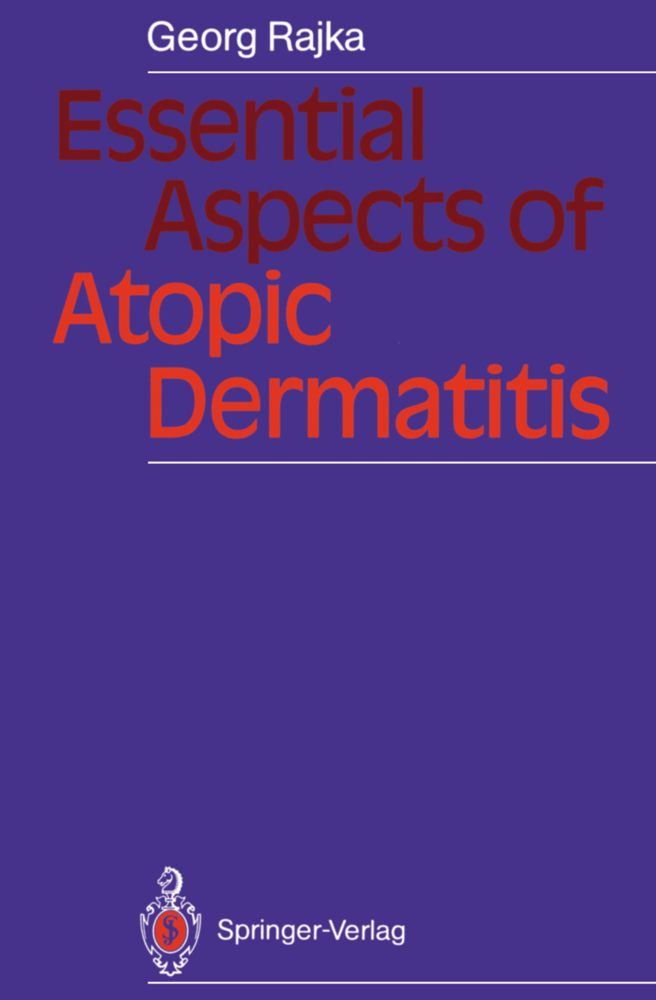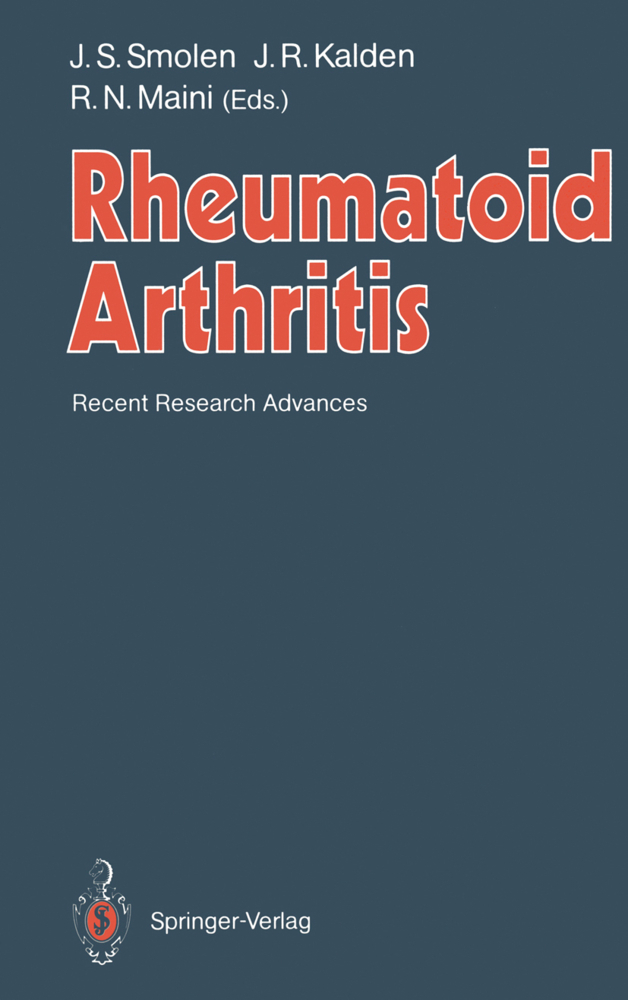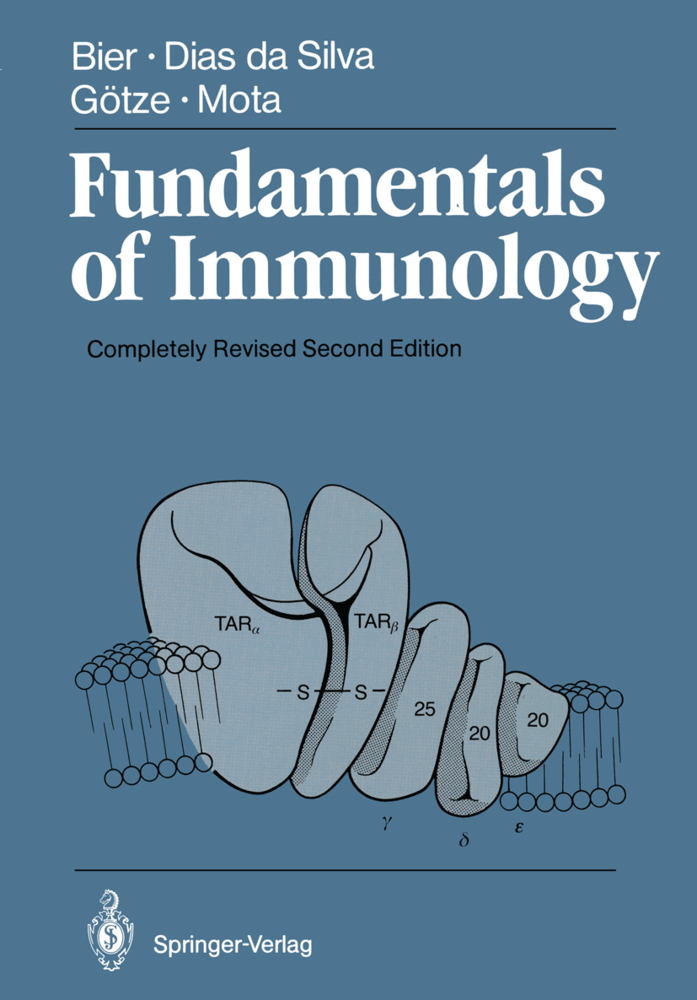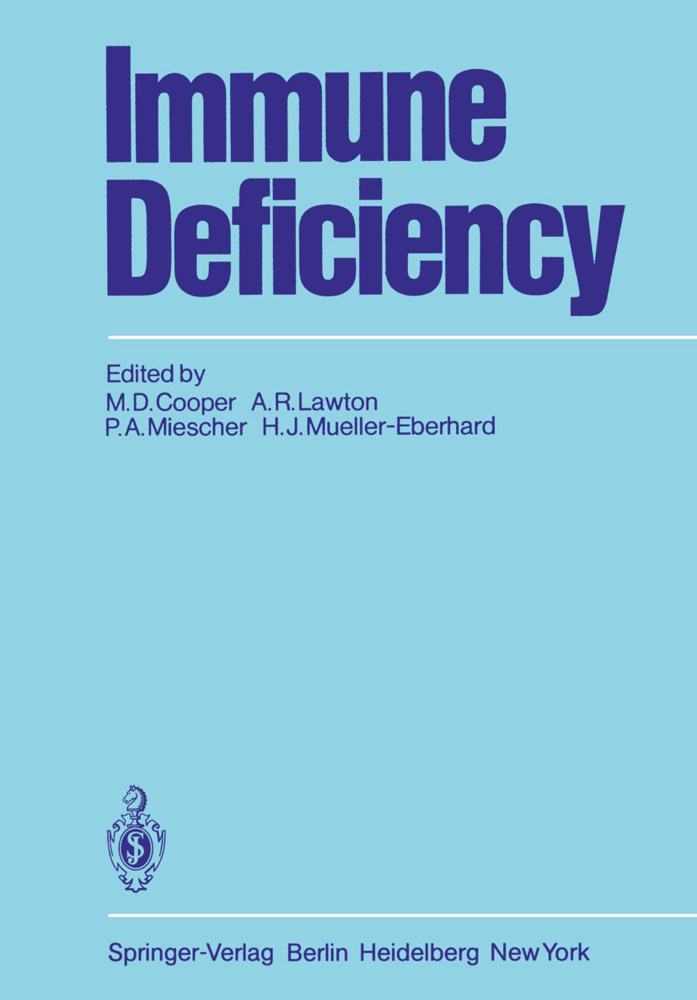MHC + X
Complex Formation and Antibody Induction
MHC + X
Complex Formation and Antibody Induction
After the discovery of the function of MHC molecules, namely to provide the context for T cell recognition of foreign antigens, in 1974 Zinkernagel and Doherty made the first drawing of MHC+X (Fig. 1 from Zinkernagel and Doherty, Nature, 251: 547, 1974). Over the next 18 years a very large number of similar drawings ensued, some of real artistic beauty. One side of the problem, the nature of the T cell receptor, was unraveled; however, we still do not know exactly what kind of a structure the T cell receptor recognizes, al though in 1987 we learned so much about the structure of MHC molecules and antigen presentation. In schematic presentations no one is now placing the foreign antigen beside the MHC molecule, but rather on top of it, as pointed out by J. L. Strominger at the MHC + X meeting in Paris. The complex of MHC and antigen is named MHC + X, but the precise meaning of this formula remains a "problem perplex", as illustrated in these proceedings by Peter Par ham. When planning the Ommen/Amsterdam meeting at the begin ning of 1987, its major aim was seen as to discuss the question of whether MHC + X can induce antibodies and, consequently, their specificity. In other terms, whether - in analogy to antigen specific MHC restricted T cells - MHC restricted antibodies also exist.
Naturally Occurring Anti-MHC Class I Antibodies in the Rat
Naturally Occurring HLA Antibodies
Anti-Class I and Anti-Class II Antibodies with Monomorphic Reaction Patterns in Non-alloimmunized Human Subjects
Antisera to "Modifying Factor" in Patients with Ankylosing Spondylitis: The Present Situation
Recognition by Human B Cells of Foreign Antigen in the Context of the MHC: a Review
Searching for MHC-Restricted Antibodies: Antibodies Induced by Injections with Syngeneic Cells Coated with Sendai Virus, Trinitrophenyl, and Xenogeneic ?2-MicrogIobulin Are Not Restricted by the Mouse MHC
Searching for MHC-Restricted Monoclonal Antibodies Recognizing the Determinants Seen by Anti-Influenza Virus Cytotoxic T-Lymphocyte Receptors
Immunization with Fibroblasts Transfected with a Cloned Retroviral DNA Induces H-2 Specific Antibodies in Syngeneic Recipients
Sendai Virus Infection of Tumor Cells Increases the Production of Autoreactive H-2 Specific Antibodies in Syngeneic Recipients
Immunization with Fibroblasts Expressing Human ?2-MicrogIobulin Induces H-2 Specific Antibodies in Syngeneic Recipients
MHC-Specific Monoclonal Antibodies Induced by Injection of Syngeneic Leukemia Cells
Monoclonal Antibodies to Murine tumors as Probes for Genetic Analysis of Individually Specific Tumor Antigens
Syngeneic Monoclonal Antibodies Against Chemically Induced Tumors
Effect of Anti-HLA Class I Monoclonal Antibodies on the Proliferation of T Cells Induced by PHA-P. Comparison with the Effect on T Cell Activation via the CD2 and CD3 Pathways
A Monoclonal Antibody Induced by H-2 Syngeneic ConA Blasts: Its Reactivity Pattern with Mouse and HumanMHC Class I Antigens
A Problem Perplex, MHC + X
MHC-Restricted Antibodies: Facts and Interpretation
Biochemistry of HLA-B27 in Transfected Cells and Transgenic Mice
Interaction of the Qa Region with ?2-Microglobulin and with Non-Qa Genes in Determination of Qa Phenotype
?2-Microglobulin and ?-Galactosidase: A Real and a Surrogate Minor Histocompatibility Antigen
Two Conformations of Ld Distinguished by Their Abilities to Bind ?2-Microglobulin Are Synthesized, Processed, and Expressed on the Cell Surface
Selective Increase of the Expression of HLA Class I Molecules by HLA-A3, HLA-B7, and HLA-Cw3 Transfected P815 Mastocytoma Cells, with Subsequent Transfection by the Human ?2-Microglobulin Gene
Exposure of the W6/32-Defined Determinant on Mouse Cells Is Dependent on the Interaction of Certain H-2 Heavy Chains with Human or Bovine ?2-Microglobulin
The Role of ?2-Microglobulin and Class I HLA Heavy Chain in Cytomegalovirus Infection
Structural Requirements of an Ovalbumin-Derived Immunogenic Peptide for T Cell Activation and Interaction with IAd
Analysis of Specificities Recognized by Monoclonal Antibodies and Cytotoxic T-Lymphocytes Using Chimeric H-2 Molecules
The Conformational Flexibility and ?2-Microglobulin Interaction Dynamics of the H-2Kb Heavy Chain
Models for MHC-Restricted T Cell Recognition of a Synthetic H-2Ld Peptide
Endorphin Receptors and HLA Class I Molecules
MHC Class I-Insulin Receptor Interaction in the Cell Membrane
Soluble Classical Class I MHC Antigens in Solution in the Body Fluids
Is There Room for a Neutralistic View on MHC Polymorphism?.
Induction of Allospecific Cytotoxic T Cells by Virus Infections In Vivo
Naturally Occurring H-2 Specific AntibodiesNaturally Occurring Anti-MHC Class I Antibodies in the Rat
Naturally Occurring HLA Antibodies
Anti-Class I and Anti-Class II Antibodies with Monomorphic Reaction Patterns in Non-alloimmunized Human Subjects
Antisera to "Modifying Factor" in Patients with Ankylosing Spondylitis: The Present Situation
Recognition by Human B Cells of Foreign Antigen in the Context of the MHC: a Review
Searching for MHC-Restricted Antibodies: Antibodies Induced by Injections with Syngeneic Cells Coated with Sendai Virus, Trinitrophenyl, and Xenogeneic ?2-MicrogIobulin Are Not Restricted by the Mouse MHC
Searching for MHC-Restricted Monoclonal Antibodies Recognizing the Determinants Seen by Anti-Influenza Virus Cytotoxic T-Lymphocyte Receptors
Immunization with Fibroblasts Transfected with a Cloned Retroviral DNA Induces H-2 Specific Antibodies in Syngeneic Recipients
Sendai Virus Infection of Tumor Cells Increases the Production of Autoreactive H-2 Specific Antibodies in Syngeneic Recipients
Immunization with Fibroblasts Expressing Human ?2-MicrogIobulin Induces H-2 Specific Antibodies in Syngeneic Recipients
MHC-Specific Monoclonal Antibodies Induced by Injection of Syngeneic Leukemia Cells
Monoclonal Antibodies to Murine tumors as Probes for Genetic Analysis of Individually Specific Tumor Antigens
Syngeneic Monoclonal Antibodies Against Chemically Induced Tumors
Effect of Anti-HLA Class I Monoclonal Antibodies on the Proliferation of T Cells Induced by PHA-P. Comparison with the Effect on T Cell Activation via the CD2 and CD3 Pathways
A Monoclonal Antibody Induced by H-2 Syngeneic ConA Blasts: Its Reactivity Pattern with Mouse and HumanMHC Class I Antigens
A Problem Perplex, MHC + X
MHC-Restricted Antibodies: Facts and Interpretation
Biochemistry of HLA-B27 in Transfected Cells and Transgenic Mice
Interaction of the Qa Region with ?2-Microglobulin and with Non-Qa Genes in Determination of Qa Phenotype
?2-Microglobulin and ?-Galactosidase: A Real and a Surrogate Minor Histocompatibility Antigen
Two Conformations of Ld Distinguished by Their Abilities to Bind ?2-Microglobulin Are Synthesized, Processed, and Expressed on the Cell Surface
Selective Increase of the Expression of HLA Class I Molecules by HLA-A3, HLA-B7, and HLA-Cw3 Transfected P815 Mastocytoma Cells, with Subsequent Transfection by the Human ?2-Microglobulin Gene
Exposure of the W6/32-Defined Determinant on Mouse Cells Is Dependent on the Interaction of Certain H-2 Heavy Chains with Human or Bovine ?2-Microglobulin
The Role of ?2-Microglobulin and Class I HLA Heavy Chain in Cytomegalovirus Infection
Structural Requirements of an Ovalbumin-Derived Immunogenic Peptide for T Cell Activation and Interaction with IAd
Analysis of Specificities Recognized by Monoclonal Antibodies and Cytotoxic T-Lymphocytes Using Chimeric H-2 Molecules
The Conformational Flexibility and ?2-Microglobulin Interaction Dynamics of the H-2Kb Heavy Chain
Models for MHC-Restricted T Cell Recognition of a Synthetic H-2Ld Peptide
Endorphin Receptors and HLA Class I Molecules
MHC Class I-Insulin Receptor Interaction in the Cell Membrane
Soluble Classical Class I MHC Antigens in Solution in the Body Fluids
Is There Room for a Neutralistic View on MHC Polymorphism?.
Ivanyi, Pavol
| ISBN | 978-3-642-74028-2 |
|---|---|
| Artikelnummer | 9783642740282 |
| Medientyp | Buch |
| Auflage | Softcover reprint of the original 1st ed. 1988 |
| Copyrightjahr | 2012 |
| Verlag | Springer, Berlin |
| Umfang | XXII, 247 Seiten |
| Abbildungen | XXII, 247 p. |
| Sprache | Englisch |

